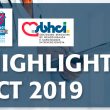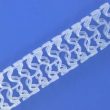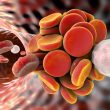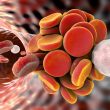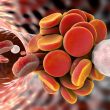Courtesy of the SBHCI. Discover the results of the PARTNER 3 study, presented during TCT Congress 2019. Link to the SBHCI publication HERE Original Title: PARTNER 3 Low-Risk Computed Tomography Substudy: Subclinical Leaflet Thrombosis in Transcatheter and Surgical Bioprosthetic Valves. Author of the original title: Raj Makkar. We are interested in your opinion. Please,<a href="https://solaci.org/en/2019/09/30/tct-2019-partner-3-low-risk-computed-tomography-substudy-subclinical-leaflet-thrombosis-in-transcatheter-and-surgical-bioprosthetic-valves/" title="Read more" >...</a>
OCT Provides Hints About the Physiopathology Behind Very Late Stent Thrombosis
Neoatherosclerosis was frequently observed in patients who experienced very late stent thrombosis, particularly those with drug-eluting stents. In-stent plaque rupture was the most common cause of thrombosis and it usually occurred in cases in which the original procedure had been carried out while the patient was undergoing an acute myocardial infarction. Macrophage infiltration can be<a href="https://solaci.org/en/2018/09/10/oct-provides-hints-about-the-physiopathology-behind-very-late-stent-thrombosis/" title="Read more" >...</a>
These Are the Thrombosis Predictors for Absorb Bioresorbable Scaffolds
J Am Coll Cardiol Intv has recently published a special issue on bioresorbable scaffolds. Abbott’s decision to pull Absorb off the market probably prompted the fast publishing of all related articles sent to the journal. Bioresorbable scaffolds were developed in hopes that they would reduce the rates of events per year 1 year post-implantation by 1.5%-3%<a href="https://solaci.org/en/2017/09/28/these-are-the-thrombosis-predictors-for-absorb-bioresorbable-scaffolds/" title="Read more" >...</a>
Very Late Thrombosis in Bioresorbable Scaffolds
The presence of a metallic device interrupts normal laminar flow and creates an artery environment that favors thrombosis, leaving the vessel vulnerable to very late thrombosis. Dual antiplatelet therapy, a better implantation technique, and several improvements in new drug-eluting stents (DES) (thinner struts, and higher polymer stability and biocompatibility) have lowered significantly the incidence of<a href="https://solaci.org/en/2017/09/26/very-late-thrombosis-in-bioresorbable-scaffolds/" title="Read more" >...</a>
Risk of Thrombosis and Bleeding with Peripheral Artery Disease and Concomitants
Peripheral artery disease (PAD) is no longer a systemic manifestation of atherosclerosis. In fact, 2 in 3 people with PAD have concomitant heart disease, and 1 in 3 people has concomitant PAD. To understand the real dimension of this problem, we should know that PAD patients have 60% more risk of acute myocardial infarction<a href="https://solaci.org/en/2017/08/22/risk-of-thrombosis-and-bleeding-with-peripheral-artery-disease-and-concomitants/" title="Read more" >...</a>
SOLACI CACI 2017 | Prevention of valvular thrombosis: antiaggregation or anticoagulation?
Read articles on the main presentations of the third day of SOLACI-CACI 2017 Congress. See the presentation by Dr. Fernando Pineda, entitled “Prevention of valvular thrombosis: antiaggregation or anticoagulation?”. We are interested in your opinion. Please, leave your comments, thoughts, questions, etc., below. They will be most welcome.
Incidence, characteristics, and treatment of valve thrombosis after TAVR
Certain studies have carried out a tomographic follow-up of patients who underwent transcatheter aortic valve replacement (TAVR) and described the frequency of leaflet thrombosis; however, in most cases, it is unclear whether this finding requires some sort of intervention. The difference between this work and those previously published is that this study is not focused on imaging, it<a href="https://solaci.org/en/2017/06/28/incidence-characteristics-and-treatment-of-valve-thrombosis-after-tavr/" title="Read more" >...</a>
AIDA: bioresorbable scaffold thrombosis still a concern in studies
Courtesy of the SBHCI. This study presented at PCR and simultaneously published by NEJM still challenges the safety of bioresorbable scaffolds. This was a multicenter noninferiority work carried out in the Netherlands, comparing 1:1 everolimus-eluting bioresorbable scaffold ABSORB and permanent-polymer everolimus-eluting stent Xience. The primary endpoint was target-vessel failure (a composite of cardiac<a href="https://solaci.org/en/2017/06/02/aida-bioresorbable-scaffold-thrombosis-still-a-concern-in-studies/" title="Read more" >...</a>
Is it safe to perform percutaneous treatment in acute pulmonary thrombosis?
Courtesy of Dr. Carlos Fava Massive and submassive pulmonary embolism (PE) has traditionally been treated with anticoagulation and catheter direct thrombolysis (CDT), but the safety and efficacy of this treatment has not been yet properly assessed. The study analyzed 137 patients presenting acute PE massive or submassive. All patients received CTD associated to heparin<a href="https://solaci.org/en/2017/05/01/is-it-safe-to-perform-percutaneous-treatment-in-acute-pulmonary-thrombosis/" title="Read more" >...</a>
Post TAVR thrombosis, is it more common than we know?
Courtesy of Dr. Carlos Fava Few post TAVR scenarios remain to be analyzed. One of them is post TAVR valve thrombosis. This event has been reported in around 0.5% of cases, but its incidence, consequences and adequate treatment remain unclear. The study analyzed 642 patients undergoing TAVR. Patients were followed up with Doppler Echocardiography<a href="https://solaci.org/en/2017/04/25/post-tavr-thrombosis-is-it-more-common-than-we-know/" title="Read more" >...</a>
